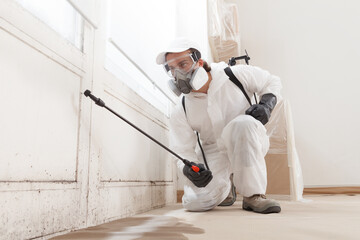Remediation plays a crucial role in protecting health, property, and the environment. Whether it involves removing contaminants, restoring damaged structures, or repairing hazardous conditions, remediation ensures that problems are addressed properly and safely. Understanding what remediation is, why it matters, and how it is carried out can help individuals and businesses make informed decisions when faced with environmental or structural challenges.
What is Remediation
Remediation refers to the process of correcting or reversing a problem, often related to contamination, damage, or unsafe conditions. It can involve soil and water treatment, mold removal, asbestos cleanup, or repairing property damage caused by fire, water, or other hazards. The primary goal of remediation is to restore a site to safe and usable conditions while minimizing risks to health and the environment.

By addressing hazards promptly, remediation helps prevent further damage, reduces liabilities, and creates safer living and working environments.
Types of Remediation
Remediation services vary depending on the problem being addressed. Here are some of the most common forms:
- Environmental Remediation
- This involves removing contaminants from soil, groundwater, or surface water. It ensures that polluted areas are restored to safe conditions and that ecosystems are protected.
- Mold Remediation
- Mold can spread quickly in damp conditions, causing health problems and property damage. Mold remediation involves removing affected materials, cleaning surfaces, and addressing the source of moisture.
- Asbestos Remediation
- Asbestos, once commonly used in construction, poses serious health risks when disturbed. Remediation ensures that asbestos-containing materials are safely handled and removed.
- Water Damage Remediation
- Floods, leaks, and storms can cause severe water damage. This type of remediation involves removing water, drying structures, and preventing mold growth.
- Fire Damage Remediation
- Fires leave behind smoke, soot, and structural damage. Remediation restores the property to safe conditions while addressing air quality concerns.
Each type of remediation requires specialized knowledge, equipment, and procedures to ensure safe and effective results.
Why Remediation is Important
Remediation is essential because it protects human health, prevents environmental harm, and preserves property value. When issues like mold, asbestos, or contamination are ignored, they can lead to long-term health problems, costly repairs, and even legal consequences.
For businesses, remediation ensures compliance with safety and environmental regulations. For homeowners, it provides peace of mind knowing their property is safe for families and guests. Investing in timely remediation can save significant costs in the long run by preventing damage from spreading.
The Remediation Process
While remediation methods vary depending on the issue, most processes follow a similar structure:
- Assessment – Professionals identify the problem, determine its extent, and evaluate risks.
- Planning – A detailed remediation plan is developed, outlining steps, equipment, and safety measures.
- Containment – Affected areas are isolated to prevent hazards from spreading during the process.
- Removal or Treatment – Contaminants, damaged materials, or hazardous substances are removed or treated.
- Restoration – The site is repaired and restored to its original or improved condition.
- Verification – Testing and inspections confirm that remediation has been successful.
This structured approach ensures thorough and lasting solutions.
Benefits of Professional Remediation
Choosing professional remediation offers several advantages:
- Safety – Experts use proper protective equipment and methods to handle hazardous materials safely.
- Efficiency – Professionals complete remediation quickly and thoroughly, reducing downtime or disruptions.
- Compliance – Many remediation projects must meet safety and environmental regulations, which professionals understand and follow.
- Prevention – Beyond immediate cleanup, remediation also addresses root causes to prevent future problems.
Attempting to handle complex remediation without proper knowledge or equipment can be risky and ineffective. Professional expertise ensures better outcomes.
Common Mistakes to Avoid
When dealing with remediation, certain mistakes can worsen the problem or increase costs:
- Delaying Action – Ignoring issues like mold, water damage, or contamination only makes them harder and more expensive to fix.
- DIY Approaches – Without proper knowledge, attempts to handle hazardous materials can be dangerous.
- Incomplete Cleanup – Failing to address the root cause means problems can return.
- Skipping Verification – Always ensure remediation has been successful through testing and inspection.
Avoiding these mistakes helps ensure remediation is effective and long-lasting.
The Future of Remediation
Advancements in technology are improving how remediation is carried out. From environmentally friendly cleaning agents to innovative filtration systems, new methods are making remediation safer, faster, and more sustainable. Drones, sensors, and digital monitoring also allow for more accurate assessments and ongoing protection.
As environmental awareness grows, demand for effective remediation will continue to rise. Businesses and homeowners alike will benefit from these innovations, creating healthier and safer environments for all.
Remediation is a critical process that protects health, restores property, and safeguards the environment. Whether dealing with mold, asbestos, water damage, or environmental contamination, timely remediation ensures that hazards are addressed effectively and safely.
By understanding the types of remediation, why it is important, and how the process works, individuals and businesses can make informed decisions when challenges arise. Professional expertise, proper planning, and preventive strategies all contribute to successful outcomes.
Investing in remediation is not just about fixing problems—it’s about creating safer, healthier, and more sustainable environments for the future.